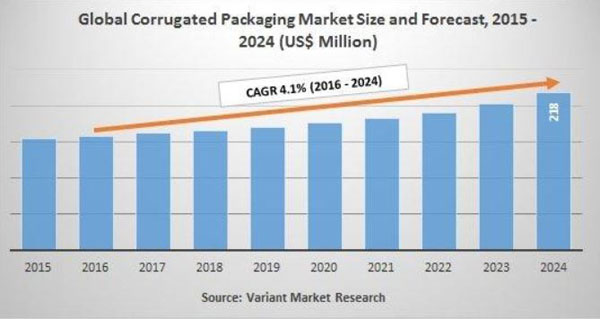Corrugated Site Numbers Alone Not Indicative of Market Health Due to Extreme Productivity
![]() Print this Article | Send to Colleague
Print this Article | Send to Colleague
The following industry relevant commentary and data was first released for Packaging Strategies (PS) site members / subscribers during the spring of 2018 but was recently made available via public web promotion of highlights. The following are some significant factual research-based takeaways from the review of the full text document titled Packaging Outlook 2018: Paperboard Packaging Overview (Mar. 2018):
- Consolidation continues to shrink the total number of plants in the industry, although the dip from 2015 to 2016 was relatively minor. In 2016, 1,155 industry plants were in operation. Of that total, 465 were corrugator plants and 690 were sheet plants.
- The workforce in the corrugated industry saw its first increase in a number of years. The number of employees in industry production was 57,075 in 2016, up from 56,227 in 2015. Not a substantial increase by any means, but a welcome development, nonetheless.
- Although the workforce growth was anemic, productivity continued to scramble a little higher over last year’s mark. Productivity in 2016 was 3,790 square feet per production man-hour, up from 3,670 square feet per production man-hour in 2015.
The following graph was also prepared from data gathered by PS industrial research demonstration:

The bottom graph, courtesy of Variant Market Research, demonstrates, again, that despite the fluctuation of the number of facilities (including a visible downward trend during the coinciding period of forecast) the productivity of the corrrugated machinery in use at sites is increasing so drastically so as to significantly reduce the need for the same number of sites... a rare scenario for a sector that is growing and good news for the industry that's also benefiting from cutting overhead costs due to previous inefficiencies / obsolete production standards that seemingly push the line of new state-of-the-art production by the month as far as new products on the market. 2018 will be marked by the adoption of more advanced, fully digital systems with "smart" automation that increases line speed more so than any innovation in approx. the past decade and does so while adding special features such as high-speed product label customization on both paperboard and corrugated packaging medium of products and shipments.



